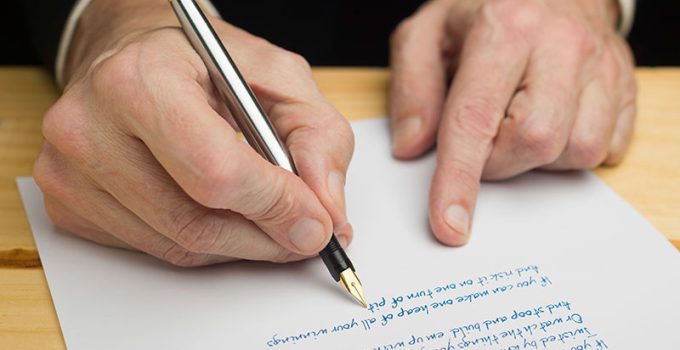In today’s world of fast-paced communication and digital correspondence, taking the time to write a handwritten thank you note, card, or letter can make a lasting impression on the recipient. In a world where quick and effortless communication is the norm, a handwritten thank-you card can show that the recipient’s kindness and generosity are valued and appreciated.
There are many reasons why a personalized thank-you card is always appreciated more than an e-mail. First and foremost, a handwritten note takes time, effort, and thoughtfulness, which conveys a sense of sincerity and authenticity. A handwritten note shows that you care enough to take the time to sit down and express your gratitude in your own words, rather than simply sending a generic message or template email.
Additionally, a handwritten thank-you card provides a tangible, physical reminder of the gratitude that you feel towards the recipient. An email can be easily deleted or overlooked, but a handwritten card or letter can be kept and treasured for years to come. In this way, a handwritten note is not only a symbol of gratitude but also a lasting keepsake that can be cherished and revisited in the future.
Thank you cards handwritten can also demonstrate your attention to detail and your willingness to go the extra mile. When you take the time to write a thoughtful note, you show the recipient that you value their kindness and generosity and that you are willing to make an effort to express your gratitude in a meaningful way.
Furthermore, a handwritten thank-you note can help strengthen relationships and build goodwill. When you take the time to express your gratitude in a personal and heartfelt way, you demonstrate that you value the relationship and the person on the other end. This can help build trust, respect, and appreciation, which can go a long way in both personal and professional relationships.
In addition to these benefits, there are a few tips and tricks to keep in mind when writing a handwritten thank-you note. Here are some best practices to help you craft the perfect message:
First, be specific and detailed in your expression of gratitude. Rather than simply saying “thank you,” take the time to explain what you are grateful for and why. This can help the recipient understand the impact that their kindness has had on you and can show that you truly appreciate their efforts.
Second, be personal and use the recipient’s name. Addressing the card or letter to the recipient by name can help make the message more meaningful and show that you are specifically grateful for their efforts. Additionally, using the recipient’s name throughout the note can help make the message feel more personal and sincere.
Third, be timely in your expression of gratitude. Sending a thank-you note promptly after receiving a gift, favor, or act of kindness can help show that you value the relationship and the person on the other end. This can help build goodwill and trust and can demonstrate that you are willing to put in the effort to maintain a positive relationship.
Fourth, be authentic in your expression of gratitude. Avoid using generic language or cliches, and instead focus on expressing your gratitude in your own words. This can help make the message more personal and meaningful and can show that you truly appreciate the recipient’s kindness and generosity.
Finally, be creative and have fun with your thank-you note. Whether you choose to use colorful stationery, include a small gift or token of appreciation, or write a poem or heartfelt message, there are countless ways to make your thank-you note stand out and feel special. By putting in a little extra effort, you can show the recipient that you truly value their kindness and appreciate their efforts.
In conclusion, a handwritten thank-you card is always appreciated more than an e-mail. It conveys a sense of sincerity, authenticity, and thoughtfulness and can provide a lasting reminder of your gratitude. By following these best practices and tips,


